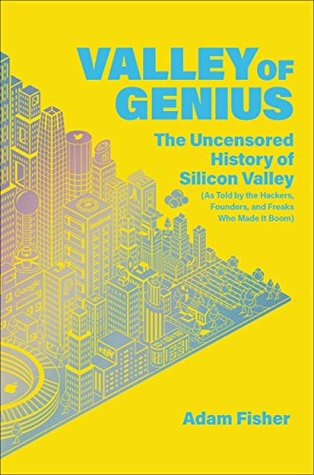More on this book
Community
Kindle Notes & Highlights
by
Adam Fisher
Lee Felsenstein: The story of Silicon Valley is the story of networks. There was never any centralized place. They were all what they call local maxima, little mounds of people here and there, and people move between them, that’s the important thing. So it’s a decentralized set of networks with mobility among them.
Dean Hovey: It just shows, particularly in Silicon Valley, how you take a good idea and run with it and improve it. It’s very rare that a lightning bolt strikes and you come up with something that’s never been thought of before. It’s a lot more taking from this, taking from that, and trying to make something work, and going for it.
R. U. Sirius: These were just text-based bulletin boards, but in many ways they were superior to social media today. You had really great conversations with extraordinary people. Larry Brilliant: Because it was Stewart, he attracted people who had these incredibly eclectic minds, and they were phenomenal writers, people who think in paragraphs. And the writing was fantastic! Kevin Kelly: That made for a very literate salon-like environment where people who could write were writing—and writing well and writing very directly. So some of the best writing I think of that decade was happening on
...more
John Giannandrea: And then he paired them with seasoned people from SGI. So the first twenty or twenty-two employees were a mixture of people right out of school who knew the leading-edge thing on what was going on with the web, and then also these seasoned engineers. The SGI DNA was there. And that was the magic that kind of worked.
Jonathan Steuer: I was the nerd getting a virtual reality PhD at Stanford. What pulled me over to Wired to start HotWired was the data piece. To get interesting data about how people use media and new technologies, you have to pay college sophomores to do weird stuff for you. But on the internet people would leave logs.
Scott Hassan: Larry came up with the idea of doing random walk, but Larry didn’t know how to compute it. Sergey looked at it and said, “Oh, that looks like computing the eigenvector of a matrix!”
Sean Parker: You have to learn how to take it step-by-step. Even if you see the ultimate outcome, you’ve got to be willing to understand other people and how to sequence all the steps to get to that outcome.
Aaron Sittig: Everyone who had come to pursue a quick fortune left, and the only people still around were people who believed in the real promise of what the internet could provide, what technology was capable of doing for people. A lot of the cynicism that happens during flush times went away, and the attitude changed. There was a lot of mutual support and looking out for each other, hoping that someone would find a way to break through and succeed.
Dom Sagolla: It was this weird intersection of I-don’t-care versus I-care-too-much: “How much don’t you care?” “I don’t care so much that I’m going to wear a nose ring and I’m not going to cut my hair or take a shower! But if you get into a discussion with me, like, ‘How is this going to be built?’ I will sit here and argue with you over code until your eyes bleed.”
Scott Hassan: I hope that these quantum entanglement systems will allow you to transmit information faster than the speed of light. If it happens, that’s going to allow us to colonize the whole entire galaxy, and other galaxies. If that’s actually, really possible, it’s going to be phenomenal, and that’s being developed right now.


